Lonzo Ball Is One Of NBA's Worst Offensive Guards — For Now
Lonzo Ball Is One Of NBA's Worst Offensive Guards — For Now
Lonzo Ball is one of the worst offensive guards in the NBA. Period. At least he has been over the course of his first NBA season.

Unlock this article, live events, and more with a subscription!
Already a subscriber? Log In
Lonzo Ball is one of the worst offensive guards in the NBA. Period.
At least he has been over the course of his first NBA season.
His offensive numbers are so bad that already there are fair suggestions he will never be a strong starter for a good team, much less a player deserving of being the second player drafted in the 2017 draft with the kind of talent deserving his own sneaker brand. On a Los Angeles Lakers team hoping to attract LeBron James, Paul George, and other all-stars, Ball has not shown signs he is capable of helping men in their primes win championships.
But every player starts on their own ground floor, some starting far higher than others. Kevin Durant hurt his team when he was on the court for a few years. Steph Curry was a frail and injury prone shooter early on. Draymond Green was a better bet to be a journeyman player at best over a starter and star for a two-time world champion. We know where those men rank now, so before we crush Ball, let’s instead examine where he struggles most and how those problems can become strengths.
It's A Man's League
One look at Ball and we know he is unlikely to ever be a powerfully built man. He is a weak 20-year-old playing against men right now. Yet we also know history says plenty of players with his build, slender from the shoulders down, have proved to be all-star players.
Reggie Miller, Allen Iverson, and Tim Duncan were stars with very little power to their games compared to many players at their positions. They were “strong enough” to make thousands of plays anyway, absorbing hard fouls, rough play, and heavy minutes every game in most seasons, with relative ease. So, too, can Ball, in time.
It’s a mistake to only think of physical play as it relates to pushing guys away with arms and shoulder strength. Today’s performance specialists lock in on leg strength, with squats being a featured drill three or four days a week in the offseason. Basketball is an athletic event that requires leg drive but also, and more frequently, being in “an athletic position” as coaches call it, with legs bent, body lowered, ready to race, jump, dive, or slide.
To stay that way through many minutes and games takes tremendous lower body power (legs and glutes), with a positive secondary benefit of having more balance as the athlete performs. This helps stabilize the athlete and reduces injury. Curry credits this enhancement with propelling his game and overall health as much as anything else he has done (remember his once weak ankles?). A devoted Ball in the performance aspect of his game, faster, quicker, stronger, more flexible, is a player that will produce more with added efficiency — even if he didn’t improve his skill game much. Finishing in traffic, using his body to create space on paint drives, holding his space when defending bigger guys on switches, all are areas where his new body will help deliver better results.
Can He Be A Shooter With That Shot?
Of course when talking Ball there is no escaping his shooting mechanics. A release that's left of the left eye, for a right-handed shooter, is awkward and problematic. He drops the ball below his waist, left of center, which is also an inefficient movement, though some players prefer to dip before they shoot and have success with it.
That's the point here, though: His funky shot isn’t going to be a problem because of the mechanics. Too many players have made too many 3s on good percentages to think his form alone has to be a problem. From Larry Bird and Kevin Martin to Reggie Miller and Dirk Nowitzki, players with unconventional shooting forms have been some of the best shooters in history. The key is shooting with a consistent form, and that’s where Ball has made mistakes, like most young players.
Earlier in the season we saw Ball “flick” his shot, meaning as soon as the ball released from his hand he would snap his shooting hand backwards and down. Other times he would just pull it away.
Preferably, he would shoot the ball and leave that shooting hand reaching towards the rim, staying balanced through the shot until about the time the ball arrived to the rim.
In an October game he went 0 for 5 from 3-point range, “flicking” the ball on each shot. His next game he flicked it just twice, holding it for the other three shots. But even when he held his form and stayed locked on target, his right hand drifted far right of the rim. This is a common byproduct when a shooter starts left of their left eye with a right-handed shot. The shooting path starts left to right and just keeps going right. He missed all five of those 3s as well. In early November he made just 2 of 13 3-pointers in back-to-back games, holding his form on both and either flicking his arm back or letting it drift far right on each miss. The very next game, clearly focused on holding his shot better, he did so but still made just 1 of 7 attempts as his shooting hand continued to drift right most of the time.
Contrast that to more recent appearances and it is easy to understand why his shooting percentage from 3-point range is surging. In 16 attempts from behind the line dating back to his final games before his injury on January 13 and his first game back this past Friday, Ball took 13 of them with excellent balance and near-perfect follow-throughs. He made seven of those 13, and missed all three in which he reverted back to his early-season problems. Dividing his season almost in half, with regard to 3-point shooting, tells the story. He made 25 of his first 98 shots, of which he rarely shot with balance and extended his follow-through completely, then made 37 of 104, of which he was far more consistent and focused on doing that.
Even if Ball does not change his shot at all (tweaking it would be my recommendation), just following through correctly every time will turn him into an above-average shooter. Given his passing gifts, this changes his “star trajectory” significantly.
Pros Read The Game
Another target area for Ball is to learn how to read the game at a far higher level. College kids play basketball; pros read it. And at advanced levels they can read, move defenders with their eyes and patience, and then make a simple play that results in a high-percentage of baskets for themselves or teammates. Ball has amazing instincts and a total willingness to move the ball just when he should. He is not a ball-stopper, and he does lead teammates to easy buckets like great point guards do. Yet his fluid play is problematic, meaning he rarely slows down to “take a picture” of the action before making a decision.
Guys like LeBron and Chris Paul do this better than anyone, but most great passers do this far more than Ball does. Being in constant motion, or worse, a rush, does not allow for a play to develop fully oftentimes. The help defender, for example, is more at risk often when caught between two decisions, which is how elite playmakers ply their craft. They make defenders think because they keep the ball an extra step or two, allowing teammates to take advantage of paralyzed helpers. Sometimes the quick pass is the right one, and Ball is beautiful at this. When he learns to slow down more, the game will open up for him to another level of options.
Importantly, being a willing shooter and scorer is key to this new level. Pass-first men like Ricky Rubio have had their career ceilings lowered because they couldn’t or wouldn’t think “score” often enough. Ball showed more of a “score first” attitude later this season and that will help him finish. It’s hard to make shots when you think “pass” but read to shoot. Easier and better to think “score” and then pass when that’s the read.
As winter turns to spring and summer, Ball has a clear path to a far better second season. Get stronger, top to bottom. Get focused on shooting his same shot every time, even if he does not adjust the overall mechanics at all. And study tape daily, seeing all of the times this year he attacked just a moment too early, when slowing down or even coming to a jump-stop would have given him great scoring or passing options. No one will panic in the NBA after a rookie guard has the kinds of struggles Ball has had this season. If he looks about the same next year, that becomes an entirely different and darker matter.
Related Content
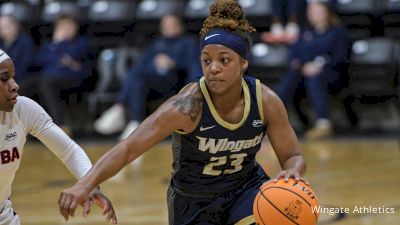 Jaia Wilson Put Up Big Dawg Numbers For Wingate In The SAC Women's Basketball Tournament
Jaia Wilson Put Up Big Dawg Numbers For Wingate In The SAC Women's Basketball TournamentApr 24, 2024
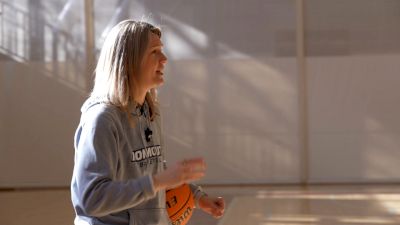 Monmouth Women's Basketball Coach, Ginny Boggess, Mic'ed Up Is Pure Gold
Monmouth Women's Basketball Coach, Ginny Boggess, Mic'ed Up Is Pure GoldApr 22, 2024
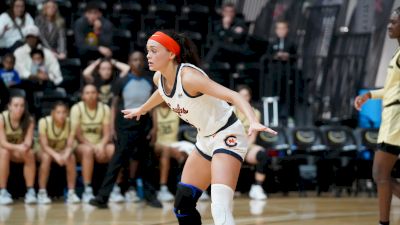 Makayla Alvey Is A Straight Baller For Carson-Newman Women's Basketball
Makayla Alvey Is A Straight Baller For Carson-Newman Women's BasketballApr 18, 2024
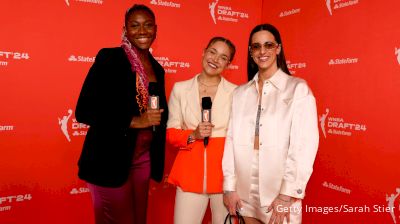 WNBA Draft 2024 Recap: Caitlin Clark Goes No.1 To Indiana Fever
WNBA Draft 2024 Recap: Caitlin Clark Goes No.1 To Indiana FeverApr 16, 2024
 Indiana Fever Roster With No.1 Pick Caitlin Clark Following WNBA Draft
Indiana Fever Roster With No.1 Pick Caitlin Clark Following WNBA DraftApr 15, 2024
 How To Watch The WNBA Draft 2024: Here's What To Know
How To Watch The WNBA Draft 2024: Here's What To KnowApr 11, 2024
 Women's NCAA Basketball Rankings: Way-Too-Early Top 25 for 2024-2025 Season
Women's NCAA Basketball Rankings: Way-Too-Early Top 25 for 2024-2025 SeasonApr 8, 2024
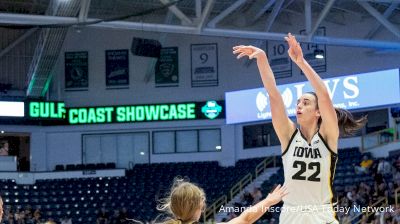 2024 WNBA Mock Draft Post Final Four: Who's After Caitlin Clark at No. 1?
2024 WNBA Mock Draft Post Final Four: Who's After Caitlin Clark at No. 1?Apr 7, 2024
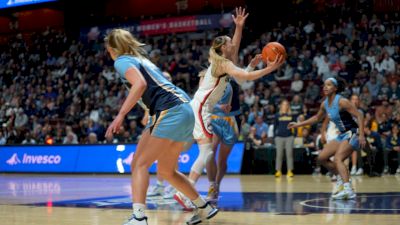 Paige Bueckers And The UConn Huskies Are Final Four Bound
Paige Bueckers And The UConn Huskies Are Final Four BoundApr 4, 2024